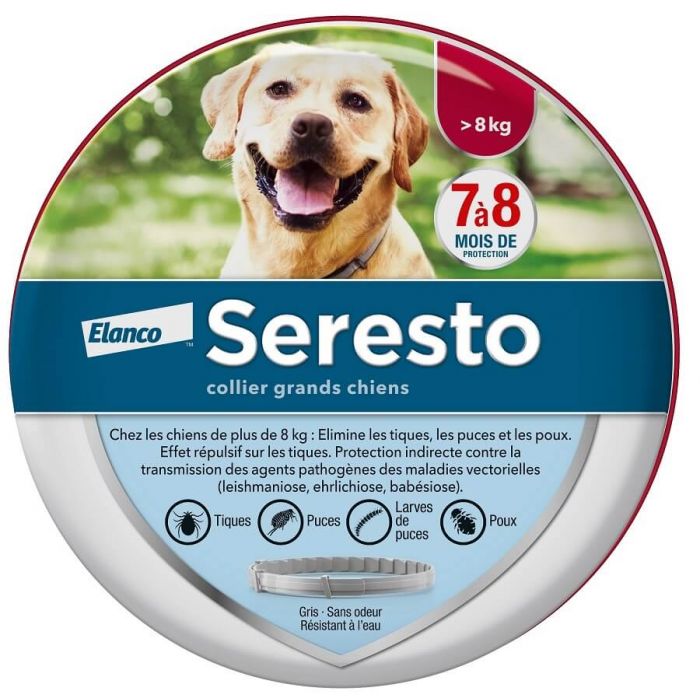-
Home
-
Seresto Flea & Tick Collar for Dogs over 8kg
Seresto Flea & Tick Collar for Dogs over 8kg
Attention, le Seresto est un collier à base de Néonicotinoides (Imidaclopride), produit interdit comme Pesticide mais toujours autorisé comme Insecticide.
| Brand | Seresto |
| Manufacturer | Bayer |
| Species | Dog |
| Prescription Type | POM-V (Written prescription required) |
How does it work?
SERESTO® contains imidacloprid and flumethrin. This is released slowly and continuously in low doses by the polymer matrix system of the collar onto your pet's skin and coat, where it forms a protective layer, repelling ticks and fleas.
The SERESTO® COLLAR can be used for the prevention and treatment of fleas and ticks for up to 8 months.
This is a prescription only medication (POM-V)
SERESTO® is only available with a prescription from your veterinary surgeon.
The most up to date Summary of Product Characteristics for this authorised veterinary medicine can be viewed here.
SERESTO® contains Imidacloprid and Flumethrin.
Active Substance
One collar of 70cm (45g) contains:
Imidacloprid - 4.5g
Flumethrin - 2.03g
Excipients
Titanium dioxide (E 171)
Iron oxide black (E 172)
Dibutyladipate
Propylene glycol dicaprylocaprate
Epoxidised soybean oil
Stearic acid
Polyvinyl chloride
SERESTO is a prescription product and must be applied according to the instructions of your veterinary surgeon.
Please read the product leaflet thoroughly before applying to your pet.
MARKETING AUTHORISATION HOLDER
Bayer plc
Animal Health Division
Bayer House
Strawberry Hill
Newbury
Berkshire
RG14 1JA
MARKETING AUTHORISATION NUMBER(S)
Vm 00010/4176
More information about this medicine for the public can be viewed here.
-
Scalibor Protectorband Collar for Large DogsThe SCALIBOR® Protectorband is an easy to use collar that provides long-lasting protection for your dog against sand-flies, mosquitoes and ticks.£39.99


Related blog posts
-
Scalibor Protectorband Collar for Large DogsThe SCALIBOR® Protectorband is an easy to use collar that provides long-lasting protection for your dog against sand-flies, mosquitoes and ticks.£39.99
Show products for :




